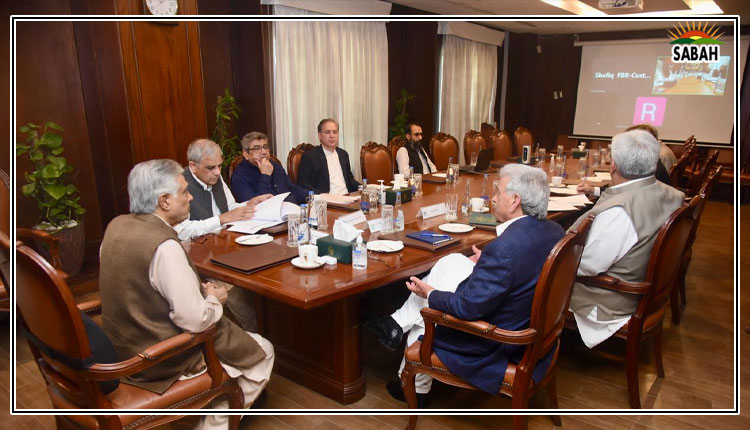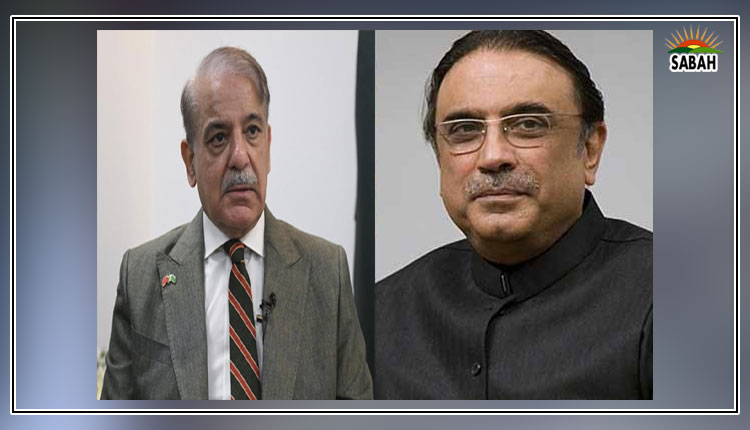Building high-tech industries…Atta-ur-Rahman
Pakistans development strategy should be primarily focused on the manufacture and export of high-tech goods. Therein lies our salvation. Knowledge today is the single biggest power engine for the sustainable and equitable socio-economic development of world economies. We must realize this and change the direction of our development programmes to meet this new world order.
Past mistakes made by successive governments should not be repeated, and policies should be designed to help Pakistan transition to a technology-driven knowledge economy on the pattern of Singapore, Korea, Vietnam, or China. As a result of our myopic development policies, we keep borrowing more to pay off increasing debts and thereby sink deeper into the hole. This nuclear country has thus become a puppet, dancing to the tunes of foreign masters.
Policies forced by the IMF relating to gas and electricity rates have destroyed industrial growth and created massive unemployment, causing huge national damage. The high interest rates of 22-24 per cent as well as increases in the prices of gas and electricity have devastated our industry in one fell swoop, and, as a result, thousands of industries have closed permanently, causing massive poverty and joblessness.
To boost exports, our rates of electricity and gas for exporting industrial units must be reduced by at least 80 per cent to make them internationally competitive. Loans from banks to exporters should also be given at a maximum interest rate of 5.0 per cent, to ensure that they thrive, expand, and provide jobs.
Jobs, jobs, and more jobs — this should be what our Ministry of Planning must focus on, or this huge tide of unemployed and frustrated young men and women will soon turn into a tsunami and become uncontrollable.
To extract ourselves from this vicious circle of poverty and corruption, the only way forward is industrial growth, particularly aimed at enhancing high-tech value-added exports. For this, we must give the highest national priority to education, science, technology, and innovation by implementing similar policies as done by other fast developing countries in Asia and elsewhere.
The funds that we are getting from the IMF, China, and other donors should be directed to help Pakistan manufacture and export products such as electronics, pharmaceuticals, engineering goods, IT products, automobiles, defence goods, etc. We must reach $50 billion in our exports by 2030 and $100 billion by 2040 to extricate ourselves from our existing economic mess.
This can best be done by entering into joint manufacturing ventures with Chinese firms as part of the CPEC programme. The request from our PM directly to the Chinese president, accompanied by suitable tax and other incentives, will help attract Chinese industry to shift some of its operations to Pakistan.
Let us consider an example from South Korea: the development of the semiconductor industry. South Korea made significant investments in basic sciences relevant to semiconductor technology, including materials science, device physics, and manufacturing processes. Universities and research institutes were encouraged to develop specialized programmes in semiconductor engineering and related disciplines, ensuring a steady supply of talent to the industry. The country fostered strategic partnerships between government agencies, research institutions, and private corporations to promote collaboration and knowledge sharing.
Semiconductor clusters, such as the Gumi Industrial Complex, emerged as hubs of innovation, where companies could access shared infrastructure, research facilities, and talent pools. Domestic companies, such as Samsung Electronics and SK Hynix, successfully localized semiconductor production processes, gradually reducing dependence on foreign technology and becoming global leaders in semiconductor manufacturing.
Another excellent example is that of Brazil. The countrys biofuel programme, notably its sugarcane ethanol industry, represents a successful model of renewable energy development, agricultural innovation, and sustainable economic growth. Brazil has invested in research and development to improve sugarcane cultivation techniques, ethanol production processes, and biofuel technologies.
Brazil pioneered the development and adoption of flex-fuel vehicles (FFVs), which can run on gasoline, ethanol, or any blend of the two. The widespread deployment of FFVs has created a flexible and consumer-friendly market for biofuels, enabling consumers to choose between ethanol and gasoline based on price and availability.
Advancements made by our neighbour India in several fields, such as pharmaceuticals and manufacturing, serve as a reminder of the benefits of a product-oriented and highly focused development approach. Indias pharmaceutical industry has emerged as a global powerhouse in the production and export of generic drugs, vaccines, and active pharmaceutical ingredients (APIs). Indian-made generic drugs are often significantly cheaper than their brand-name counterparts, making them accessible to patients who would otherwise be unable to afford treatment. During the Covid-19 pandemic, Indian-made vaccines, such as Covaxin and Covishield (the Indian version of the Oxford-AstraZeneca vaccine), were distributed globally through initiatives like Covax.
Another excellent example is the development of high-speed bullet train manufacturing in China. This high-speed rail (HSR) infrastructure represents one of the most remarkable engineering achievements of the 21st century. The countrys ambitious HSR programme has not only transformed its transportation system but also spurred economic growth, regional integration and technological innovation on a massive scale.
To kick-start its HSR programme, China entered into technology transfer agreements with foreign companies, particularly those from Japan, Germany, and France, which had already established high-speed rail systems. This facilitated the acquisition of the expertise, equipment, and know-how necessary for developing indigenous high-speed rail technology.
Pakistan is today in the process of establishing a centre of excellence at the Pakistan-Austria University of Applied Science and Engineering in Haripur, Hazara for the indigenous manufacture of bullet trains in collaboration with China. This exciting new entrepreneurial university, the first of its kind in the world, has nine foreign engineering universities from Austria, Germany and China deeply involved in teaching and research programmes, and it was set up under my supervision. The centre of excellence in bullet train technologies is in partnership with Beijing Jiaotong University in China, which is ranked as the top world university in high-speed railway engineering.
Our planning ministry needs to come forward with a completely fresh approach, focused largely on the manufacture and export of high-tech (high value-added) products for the socio-economic development of Pakistan. The ministry will need to set up training programmes to supply a qualified workforce to high-tech industries and arrange joint ventures with industrial partners in China and elsewhere.
The qualified technical workforce can be provided by strengthening the existing centres of excellence and establishing a network of entrepreneurial universities on the pattern of Pakistan-Austria Fachhochschule so that university training can have a direct impact on socio-economic development.
Courtesy The News












